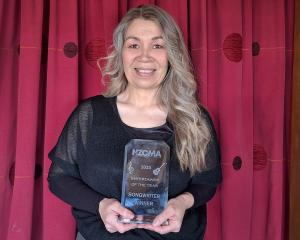The Tsunami Hazard in New Zealand Review released yesterday showed tsunamis caused by earthquakes could range from 2m to 10m high along the Southland coast, about 50% more than previously thought, Emergency Management Southland manager Neil Cruickshank said.
''We don't want to be alarmist, but people need to know these things.''
The review is the first since 2005. It modelled tsunami risks using information gained from actual tsunamis in the Indian and Pacific oceans between 2004 and 2011.
Southland's main threat of tsunamis come from earthquakes in the Puysegur Trench, off the southwest coast of Fiordland, or the Alpine Fault.
Mr Cruickshank said the review confirmed Southland was one area where a large tsunami could arrive before an official warning could be issued or sirens activated as it was believed a large earthquake in the Puysegur Trench could generate a tsunami within one hour.
Emergency Management Southland had recently erected about 40 tsunami signs along the coast warning people to move to higher ground immediately after a sizeable earthquake.
''The most important message has not changed, which is if you are near the coast and feel a significant earthquake - one in which it is hard to stand up and lasts for more than 30 seconds - then move inland or get to high ground and then find out from official sources what is happening,'' he said.
A 10m-high wave ''would go a long way inland'', he said, possibly affecting the coastal townships of Bluff, Waikawa and Orepuki as well Stewart Island. It could also travel up the New River estuary and flood low-lying parts of Invercargill such as Otatara, Invercargill airport and the Bond St industrial area.
Mr Cruickshank said local councils got together to draw an inundation map two years ago showing the possible impact of tsunamis. Now there was new information, the maps might be redrawn, he said. A meeting was planned for February to discuss that.
Mr Cruickshank said the science of earthquakes and tsunamis was constantly changing and it was impossible to draw a ''one size fits all'' map.
''Nothing is certain, but mapping as much as we know can help.''
He said he and his staff would be fully briefed on the review later this month.
After that, staff were happy to speak to community groups about the risks so that everyone was better prepared.
In Otago, the report indicated wave heights to have remained the same around the coast either side of Dunedin, at between 6m and 8m, but the city itself could experience heights of between 4m and 6m, up from 3.8m in 2005.
Along the southern coast, the wave heights had been judged to have gone from 4m to 6m to 6m to 8m.
Otago Regional Council engineering and natural hazards director Gavin Palmer said the council was assessing the implications for Otago from the report.
The information would be added to that the council already held on tsunami risk.












